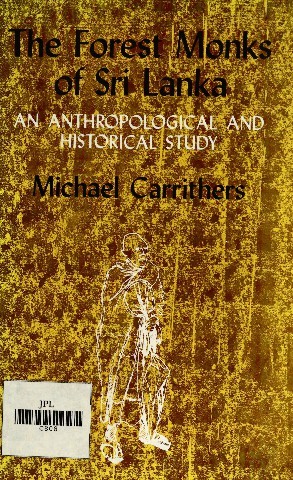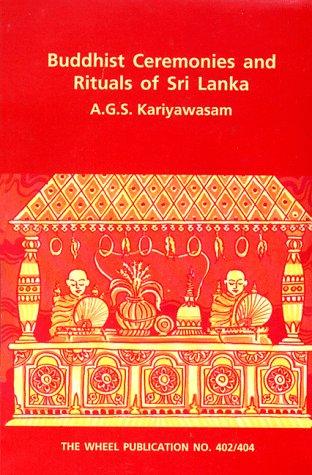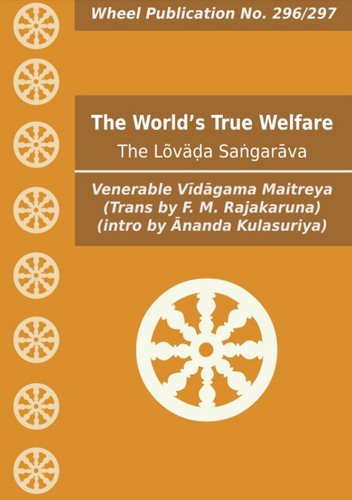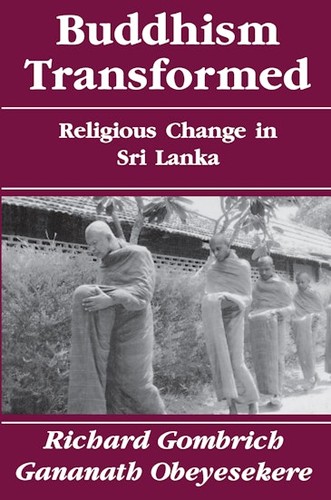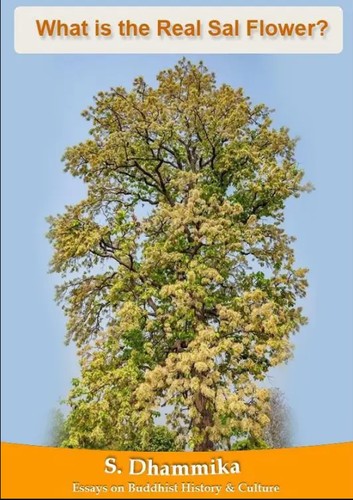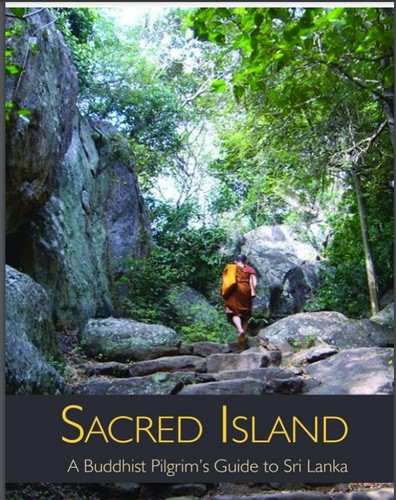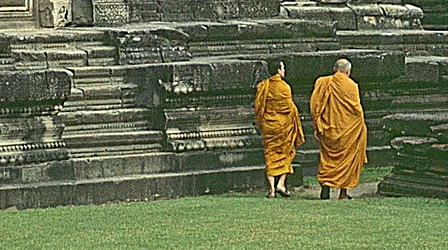Sri Lankan Buddhism
Subscribe to this topic via: RSS
Buddhism in Sri Lanka.
Sinhalese Buddhism has undergone several periods of decline and revival since it first came to the island in the 3rd century BCE. From the Southern Indian conquests of the middle ages and the British colonial rule of the 19th century, Sri Lankan Buddhism today is a heady mix of exuberant, South Asian devotionalism and rational, European modernism.

Elephants dressed in brightly-lit costumes stand in front of the Temple of the Tooth during the Kandy Esala Perahera in 2013.
Table of Contents
Books (15)
Featured:
-
294 pages
-
A Pāli and English line by line (interlinear) version of a short chant wishing well to all beings based on the Visuddhimagga: starting close and working out.
-
464 pages[recommended but under copyright]
See also:
Readings (27)
Featured:
-
⭐ Recommended
Since July 20, 1985, a new higher ordination (upasampadā) movement has emerged at the Dambulla Buddhist temple in Sri Lanka. The architect of this movement, a Sinhala Buddhist monk named Inamaluwe Sumangala, challenges the contemporary Buddhist monastic practice of ordaining monks on the basis of their castes
-
⭐ Recommended
In the interests of conservatism it has had to compromise with modernity in such features as the veneer of bureaucratically efficient procedures and also the multiplication of interstitial roles. But the groups of devout men firmly penned into their quarters and lectured daily on the Jatakas pose no threat to traditional Buddhist order
-
⭐ Recommended
What happens to the meaning of Buddhist rituals in military spaces? Do the military confines and the political context alter the meaning of “non-violent” rituals? Can they become “violent” rituals?
-
⭐ Recommended
Being perceived as a good Buddhist woman worked as a powerful form of career capital for the respondents in the sample, who used their faith to combat gender disadvantage in their work settings.
-
Ideally, a Buddhist temple must have certain symbols and facilities. These include a shrine room with a Buddha statue and statues of Buddha’s main disciples, a bo tree and a small shrine, a pagoda with relics, living quarters for the monks, a preaching hall, and a compound for people to gather and offer flowers. It is also customary to have a small deity shrine within the temple premises.
-
The modern idea of religion as divorced from power succeeded in dislodging the influence that Buddhism had over Sri Lankan politics, but only for a short time…
-
This article explores two key mythic cycles that shape Viṣṇu’s divine profile in Sri Lankan, Buddhist culture. The first involves abbreviated Sinhala versions of episodes from the Rāmāyaṇa, which influence the portrayal of Rāma and his connection to Viṣṇu. The second myth, widely spread in Sinhala folklore, depicts Viṣṇu as the righteous conqueror of the asura Bhasma.
-
This article will use the case study of nuns’ training programs to examine the revival of the sangha in Sri Lanka and the role of exchange among devotees of different traditions in Asia. By cross-tradition I am referring to different traditions such as, in this case, the Theravāda tradition in Sri Lanka and the Mahayana Chinese tradition in Taiwan.
-
The defining characteristic of the Saṁsthāva as a monastic organization is taking the texts seriously and trying to put them into practice. They profess a strict adherence to the Pali canon and the Theravada commentarial literature.
-
One of the ironies of the bhikkhuni controversy in Sri Lanka is that both sides seem to believe that the very integrity of Theravāda Buddhism is at stake in the bhikkhuni revival.
-
This paper explores some of the reasons behind the general reticence concerning higher ordination felt by many of the silmātas interviewed, and focuses specifically on some of the socio-economic factors that may be affecting their decision-making
-
In this short story, the author explores the author’s personal experience with mindfulness and walking meditation during the annual procession in Kandy.
-
Tantra finally gained official recognition and patronage during the reign of Sena 1 (833-853) who, we are told, had taken the bodhisattva vow. This monarch was interested enough in new trends in Buddhism to establish an ecumenical institute named Virankurarama, where 25 monks from each of the four major sects in Sri Lanka could study the new ideas coming from India.
See also:
Audio/Video (6)
Featured:
-
Hikkaduwe Sri Sumangala was of interest to me because he was such an influential and active figure among Buddhists in Sri Lanka, Buddhists in other countries, scholars of Buddhism, as well as with colonial administrators…
60 min -
This simple, non-verbal film follows the daily lives of novice child monks at a Sri Lankan monk training school (pirivena) in Kandy, capturing their routines and experiences with subtle storytelling.
25 min -
The Peak’s pluralism should not be read as pure romanticism. Some speak of the Peak as uniquely harmonious, but in reality it operates like any other human space, with continual negotiations and alliances among groups evolving over time. At present, the Peak is controlled by Buddhists, who make some accommodations for pilgrims of other religions, but still place many restrictions over the summit. Religious tensions can exist, as do divisions between Sinhala and Tamil ethno-linguistic groups. Nevertheless, the mountain can also encourage cooperation. The difficulty of the climb is a source of solidarity among strangers
15 min -
 6 min
6 min
See also:
Reference Shelf (5)
Featured:
-
A comprehensive guide to Buddhist Forest Monasteries and Meditation Centres in Sri Lanka specifically designed for Western Bhikkhus and seasoned lay practitioners.
-
A trilingual compilation of devotional hymns, vows, and meditations for chanting from the Sri Lankan tradition.
See also:
